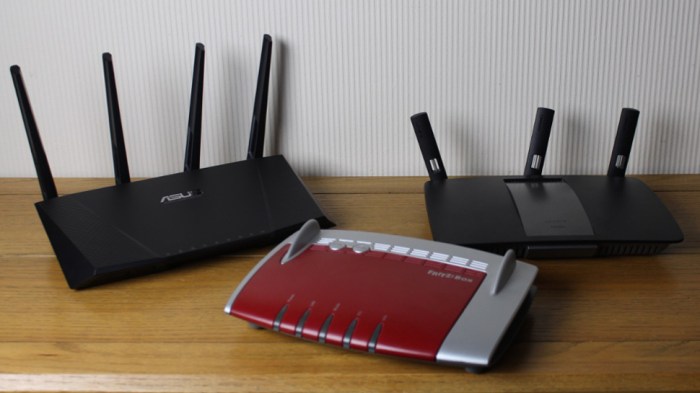Aluminum and Electromagnetic Waves
Aluminum is a metal that has a unique relationship with electromagnetic waves, including those used for Wi-Fi. Understanding this relationship is crucial for understanding how aluminum can impact Wi-Fi signal strength.
Aluminum’s Interaction with Electromagnetic Waves
Aluminum is a good conductor of electricity. This means that electrons can move freely within the metal, allowing it to easily carry electrical currents. When electromagnetic waves encounter aluminum, the oscillating electric and magnetic fields within the waves cause these free electrons to move. This movement of electrons creates a secondary electromagnetic wave that opposes the original wave, resulting in a phenomenon known as reflection.
Aluminum’s Reflective Properties Compared to Other Materials
Aluminum is a highly reflective material for electromagnetic waves, particularly in the frequency range used for Wi-Fi (2.4 GHz and 5 GHz). This means that aluminum surfaces can significantly reflect Wi-Fi signals, potentially blocking or weakening the signal from reaching devices. Other materials commonly found in homes, such as wood, glass, and drywall, are generally less reflective of Wi-Fi signals than aluminum.
Examples of Aluminum’s Use in Technologies Involving Electromagnetic Waves
Aluminum’s reflective properties make it a valuable material in various technologies involving electromagnetic waves. Here are a few examples:
- Satellite Dishes: Aluminum is used to construct satellite dishes, which are designed to reflect incoming radio waves from satellites to a receiver. The reflective properties of aluminum ensure that the maximum amount of signal is captured and directed towards the receiver.
- Microwave Ovens: The walls of microwave ovens are typically made of aluminum to reflect the microwaves generated within the oven. This reflection helps to distribute the microwaves evenly, ensuring that food is heated consistently.
- Radio Antennas: Aluminum is a common material used in the construction of radio antennas. Its reflective properties allow antennas to efficiently radiate and receive radio waves.
Aluminum’s Impact on Wi-Fi Signal Strength: Aluminum Can Improve Wifi Signal
Aluminum, a common material found in various household items, can surprisingly affect the strength of your Wi-Fi signal. This impact is due to aluminum’s ability to reflect and absorb electromagnetic waves, which are the same waves used by your Wi-Fi router to transmit data. The extent of this interference depends on factors such as the distance between the aluminum object and the router, the thickness of the aluminum, and the placement of the object relative to the router.
Aluminum’s Interference with Wi-Fi Signals
Aluminum’s ability to reflect and absorb electromagnetic waves can significantly impact the strength of your Wi-Fi signal. This interference can lead to a weaker signal, slower internet speeds, and dropped connections. Here are some common scenarios where aluminum objects might interfere with your Wi-Fi:
- Placing a router near aluminum furniture: If your router is positioned close to aluminum furniture, such as a metal desk or a bookshelf with aluminum shelves, the signal might be reflected or absorbed by the metal, reducing its strength in the surrounding area.
- Using aluminum foil to shield electronics: While aluminum foil can be effective at blocking electromagnetic waves, it can also block your Wi-Fi signal if placed near your router or devices.
- Aluminum siding or roofing: Aluminum siding or roofing can also interfere with Wi-Fi signals, especially if the router is positioned close to an exterior wall.
Aluminum Thickness and Wi-Fi Signal Penetration
The thickness of the aluminum plays a crucial role in how it affects Wi-Fi signal penetration. Thicker aluminum sheets can block Wi-Fi signals more effectively than thinner sheets. This is because thicker aluminum provides a greater surface area for the electromagnetic waves to interact with, leading to more reflection and absorption.
For example, a thin aluminum sheet used for wrapping food might have a minimal impact on your Wi-Fi signal, while a thick aluminum wall or a large piece of aluminum furniture could significantly interfere with the signal.
Aluminum and Wi-Fi Signal Reflection
Wi-Fi signals, like all electromagnetic waves, can be reflected by surfaces. Aluminum, being a highly conductive metal, is particularly effective at reflecting these waves. This reflection can lead to signal interference, creating dead spots in your Wi-Fi coverage.
Aluminum’s Role in Wi-Fi Signal Reflection
Aluminum surfaces, like foil or sheet metal, act as mirrors for Wi-Fi signals. When a Wi-Fi signal encounters an aluminum surface, it bounces off, changing the direction of the signal. This reflection can cause the signal to travel in unintended directions, leading to weaker signal strength or even complete signal blockage in certain areas.
Hypothetical Scenario
Imagine a scenario where you have a Wi-Fi router in your living room, and you’re trying to access the internet from your bedroom, which is located on the other side of a wall lined with aluminum siding. The aluminum siding could reflect the Wi-Fi signal, preventing it from reaching your bedroom. This reflection would create a dead spot in your bedroom, making it difficult to connect to the internet.
Reflection Properties of Aluminum Surfaces
The reflectivity of aluminum surfaces can vary depending on their properties, such as thickness, surface finish, and the frequency of the Wi-Fi signal.
| Surface | Reflection Properties |
|---|---|
| Aluminum Foil | Highly reflective, especially for high-frequency signals. |
| Aluminum Sheet Metal | Moderately reflective, with reflectivity varying depending on thickness and surface finish. |
Practical Considerations for Aluminum and Wi-Fi
Aluminum, while an excellent conductor of electricity, can have a significant impact on Wi-Fi signals, potentially causing interference and weakening your internet connection. Understanding how aluminum interacts with Wi-Fi signals and taking steps to minimize its influence can greatly enhance your home network’s performance.
Identifying Aluminum Objects in Your Home
Identifying aluminum objects in your home is the first step in addressing potential Wi-Fi interference. Aluminum is commonly found in various household items, and recognizing these items can help you understand their potential impact on your network.
- Aluminum foil: A common kitchen staple, aluminum foil can reflect and absorb Wi-Fi signals, creating dead zones.
- Aluminum siding: If your home has aluminum siding, it could potentially reflect and block Wi-Fi signals, especially if your router is located near the siding.
- Aluminum windows: Aluminum windows, like siding, can act as a barrier to Wi-Fi signals.
- Aluminum furniture: While less common, aluminum furniture, such as chairs or tables, can also affect Wi-Fi signal strength.
- Aluminum appliances: Appliances like refrigerators, ovens, and microwaves can interfere with Wi-Fi signals, especially when in close proximity to your router.
- Aluminum-backed mirrors: These mirrors often have a thin layer of aluminum behind the glass, which can block Wi-Fi signals.
Alternatives to Aluminum
While aluminum is a popular material for various household applications, its impact on Wi-Fi signals can be a concern. Fortunately, there are alternative materials that can be used in place of aluminum, offering different properties and minimizing interference with wireless networks.
This section will explore several alternative materials, comparing their characteristics with aluminum and highlighting their benefits and drawbacks in specific scenarios.
Wood, Plastic, and Glass: Exploring Alternatives
When considering alternatives to aluminum, materials like wood, plastic, and glass offer distinct properties and can be used in various household applications. Understanding their interaction with electromagnetic waves and their potential impact on Wi-Fi signals is crucial.
- Wood: Wood is a natural material that generally has a minimal impact on Wi-Fi signals. It’s a good insulator and doesn’t significantly reflect or absorb electromagnetic waves. This makes it a suitable choice for furniture, cabinets, and other household items. However, the type of wood and its density can affect its interaction with Wi-Fi signals. For example, dense hardwoods might have a slightly greater impact than softwoods.
- Plastic: Plastic is another versatile material commonly used in household items. Different types of plastic exhibit varying properties regarding their interaction with electromagnetic waves. Some plastics can be conductive, while others are insulators. Generally, non-conductive plastics, like polypropylene or polyethylene, have minimal impact on Wi-Fi signals. However, conductive plastics, like ABS, might interfere with wireless signals.
- Glass: Glass is a transparent material that is generally considered to have a minimal impact on Wi-Fi signals. It’s a good insulator and doesn’t significantly reflect or absorb electromagnetic waves. This makes it a suitable choice for windows, mirrors, and other household items. However, certain types of glass, like tinted or metallic glass, might have a greater impact on Wi-Fi signals.
Comparing Properties: Aluminum vs. Alternatives, Aluminum can improve wifi signal
To better understand the impact of these materials on Wi-Fi signals, it’s helpful to compare their properties with aluminum:
| Material | Impact on Wi-Fi Signal | Benefits | Drawbacks |
|---|---|---|---|
| Aluminum | Reflects and absorbs electromagnetic waves, potentially causing signal interference. | Durable, lightweight, and readily available. | Can interfere with Wi-Fi signals, particularly when used in large quantities or near routers. |
| Wood | Generally minimal impact on Wi-Fi signals. | Natural, aesthetically pleasing, and good insulator. | Can be susceptible to damage and moisture, and may require more maintenance. |
| Plastic | Depends on the type of plastic. Non-conductive plastics have minimal impact, while conductive plastics can interfere with signals. | Versatile, affordable, and available in various colors and textures. | Can be prone to scratches and wear, and some types may release harmful chemicals. |
| Glass | Generally minimal impact on Wi-Fi signals. | Transparent, durable, and aesthetically pleasing. | Can be heavy and fragile, and may require specialized handling. |
Scenarios and Considerations
When choosing materials for household applications, considering their impact on Wi-Fi signals is essential. Here are some scenarios and considerations:
- Furniture: Wood is an excellent choice for furniture as it generally has a minimal impact on Wi-Fi signals. Consider using wood for cabinets, bookshelves, and tables.
- Kitchen Appliances: Stainless steel is often used in kitchen appliances. While stainless steel can reflect electromagnetic waves, its impact on Wi-Fi signals is typically minimal. However, consider using appliances made from other materials like plastic or glass if you’re concerned about signal interference.
- Wall Coverings: Aluminum foil is often used as a reflective barrier behind walls. This can improve insulation but can also interfere with Wi-Fi signals. Consider using alternative materials like wood paneling, wallpaper, or paint.
Aluminum can improve wifi signal – The interaction between aluminum and Wi-Fi signals is a fascinating example of how everyday materials can impact technology. While aluminum can sometimes cause interference, it’s important to remember that its impact depends on various factors like the thickness of the material, its placement relative to your router, and the frequency of your Wi-Fi network. By understanding these nuances, you can make informed decisions about your home network setup and enjoy a strong, reliable Wi-Fi connection.
You know how people say aluminum can improve your Wi-Fi signal? Well, that’s just one of those old wives’ tales. But what’s not a myth is that the Jawbone Up2 is a seriously no-frills fitness tracker for just a hundred bucks. jawbone up2 is a no frills fitness tracker with a 100 price tag Speaking of signal, the Up2 might not be the flashiest tracker, but it’s reliable and gets the job done.
Just like how your Wi-Fi router probably works fine without a fancy aluminum shield.
 Standi Techno News
Standi Techno News

